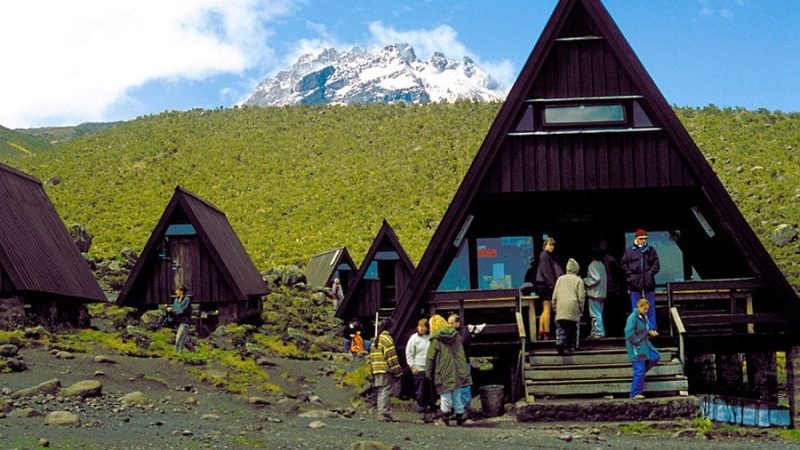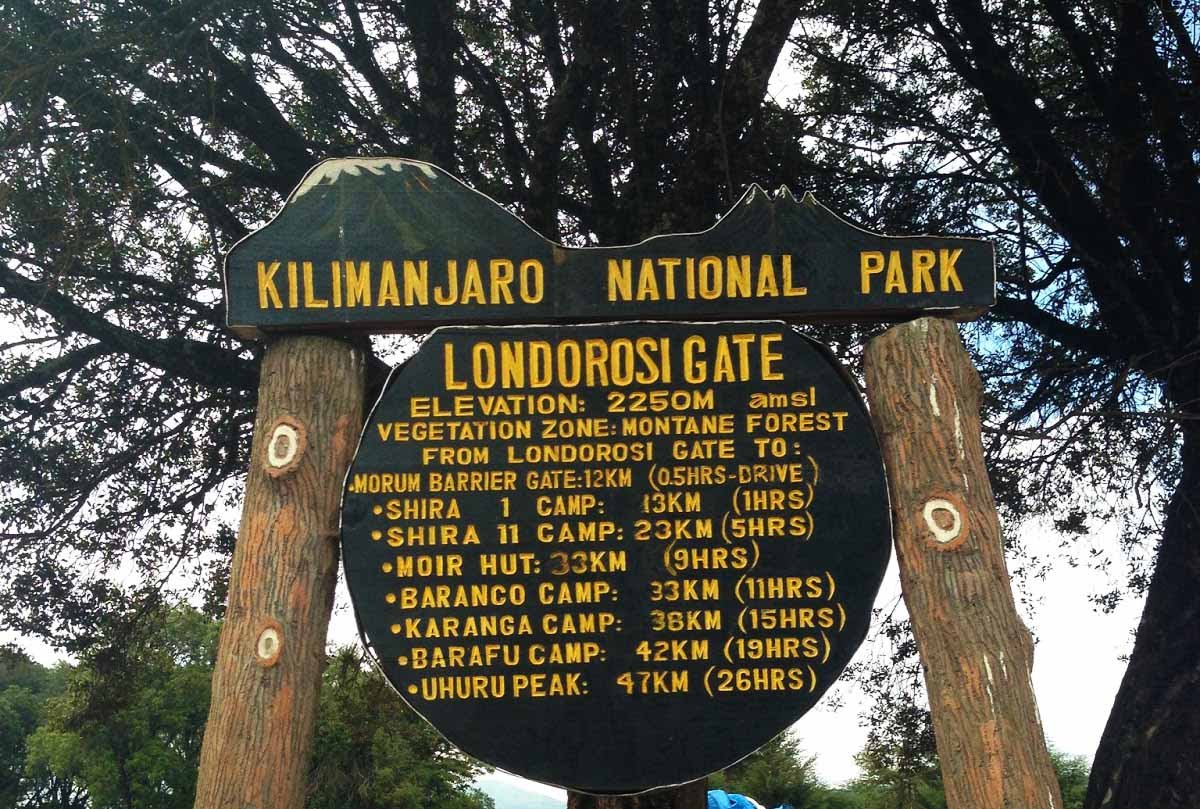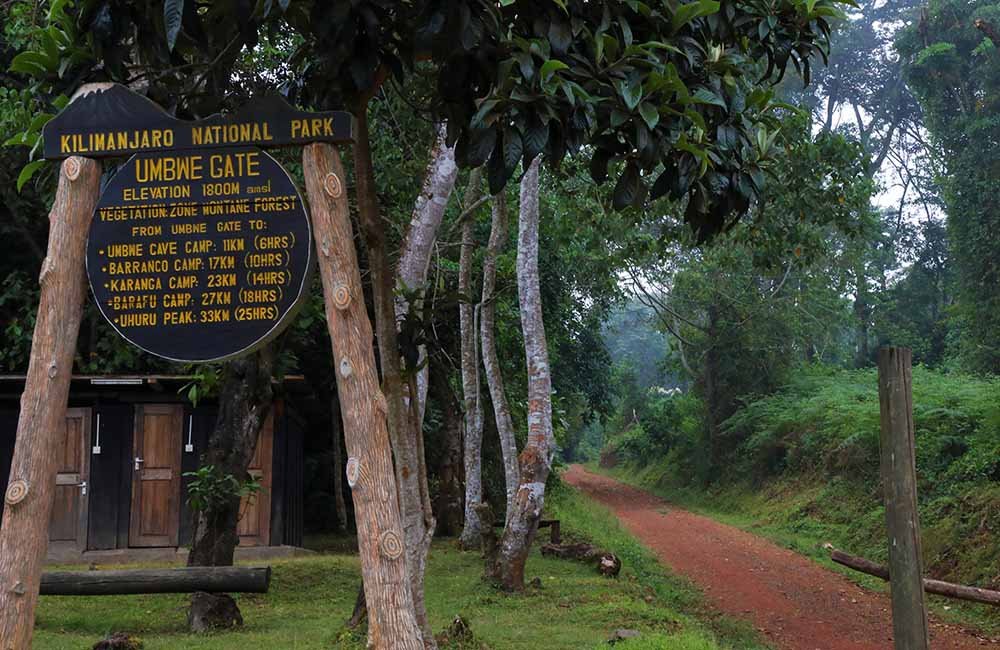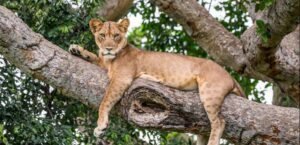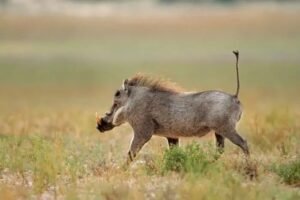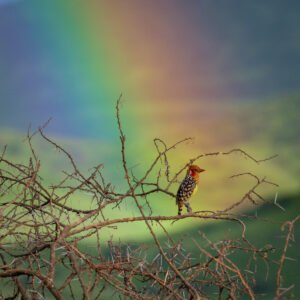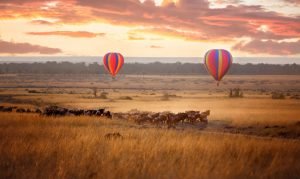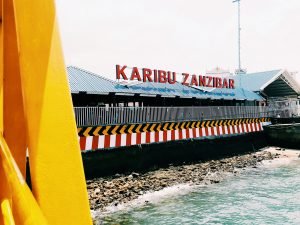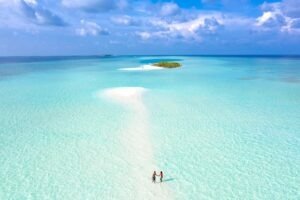
All Routes for Mount Kilimanjaro Trek to Uhuru Peak, the highest point in Africa
Mount Kilimanjaro Trek is the journey to the tallest mountain in Africa. It stands an impressive 19,341 feet tall over the Tanzanian plains. Mount Kilimanjaro is a dormant volcano in Tanzania. It has three volcanic cones: Kibo, Mawenzi and Shira. It is the highest mountain in Africa and the tallest free standing mountain in the world, meaning it is not part of a mountain range (such as Mount Everest and the Himalayans).

The name itself “Kilimanjaro” is a mystery wreathed in clouds. It might mean Mountain of Light, Mountain of Greatness or Mountain of Caravans.
Bike Expedition with Sima Safari
Many people goes for the Mount Kilimanjaro Trek every year. The activity is not just for hard core backpackers and experienced mountaineers.
Children as young as 6 years old and seniors as old as 82 years old have done it. Experts agree that anyone who is in average physical shape can climb Kilimanjaro, which is why the mountain is so popular amongst the general adventure seeking population. No technical mountaineering ability is required.
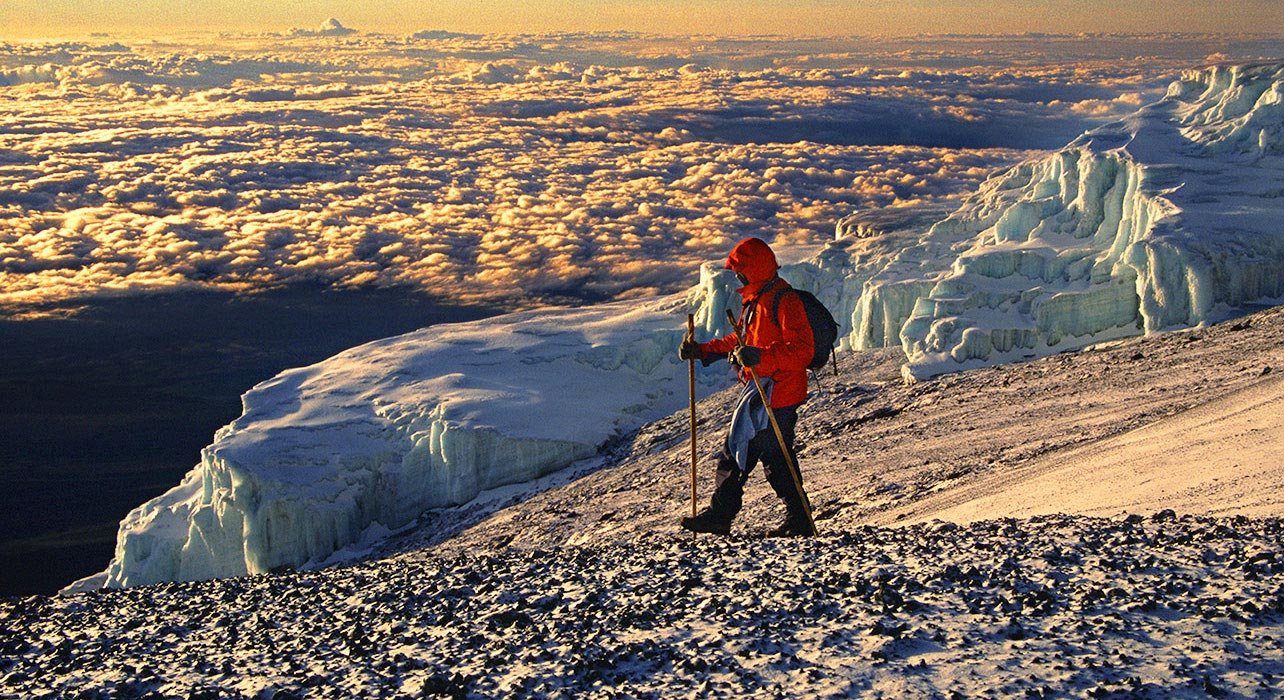
The weather on the mountain varies widely depending on the elevation and season. It can be extremely cold near the summit, so warm, wind breaking clothing is a necessity. Heavy rain is also possible at any time, so quality waterproof gear is mandatory. All climbers should be well equipped.

The best time to climb Kilimanjaro is during the dry season. January, February, July, August, September, October are the best months to go. The rainy season occurs during the months of March, April, May, June, November and December.
There are many different trekking and climbing tours available for those wishing to climb Mount Kilimanjaro. In fact, even those who have climbed the mountain before can find a new adventure on this stunning mountain. You can choose whether to climb alone, join an existing climb, or bring a group of your own.
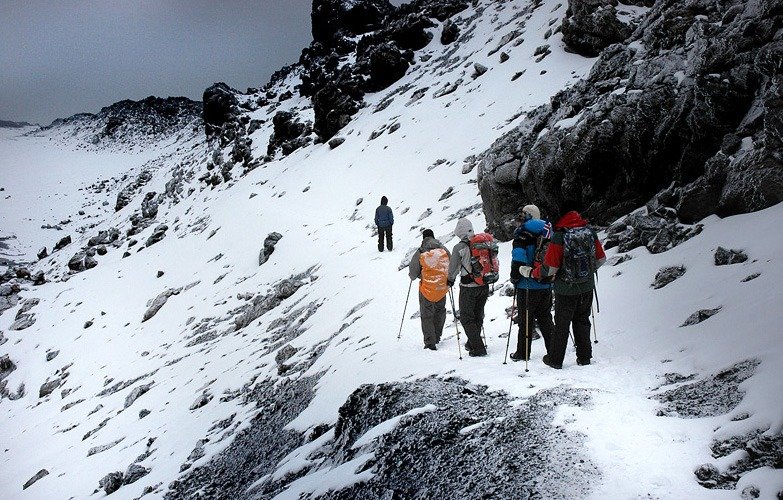
There are six major routes on Mount Kilimanjaro Trek. Each is well maintained, and each route has different pros and cons. Foot traffic on the routes is regulated by the Kilimanjaro National Park Authority. It is required to have a guide while trekking on Kilimanjaro, and there is no shortage of guide operators who can take you to the summit.
Climbing Kilimanjaro | The Phases
First Stage, Tropical Forest
With most of the old lowland forest now cultivated and settled, the first experience of the mountain environment begins with the dense vegetation of tropical montane forest between 1850m and around 2800m.
Cloud condensation mainly gathers around the forest, so this area is usually damp or drenched with rainfall, creating an intriguing mass of plant life and running rivers between endemic tree species.
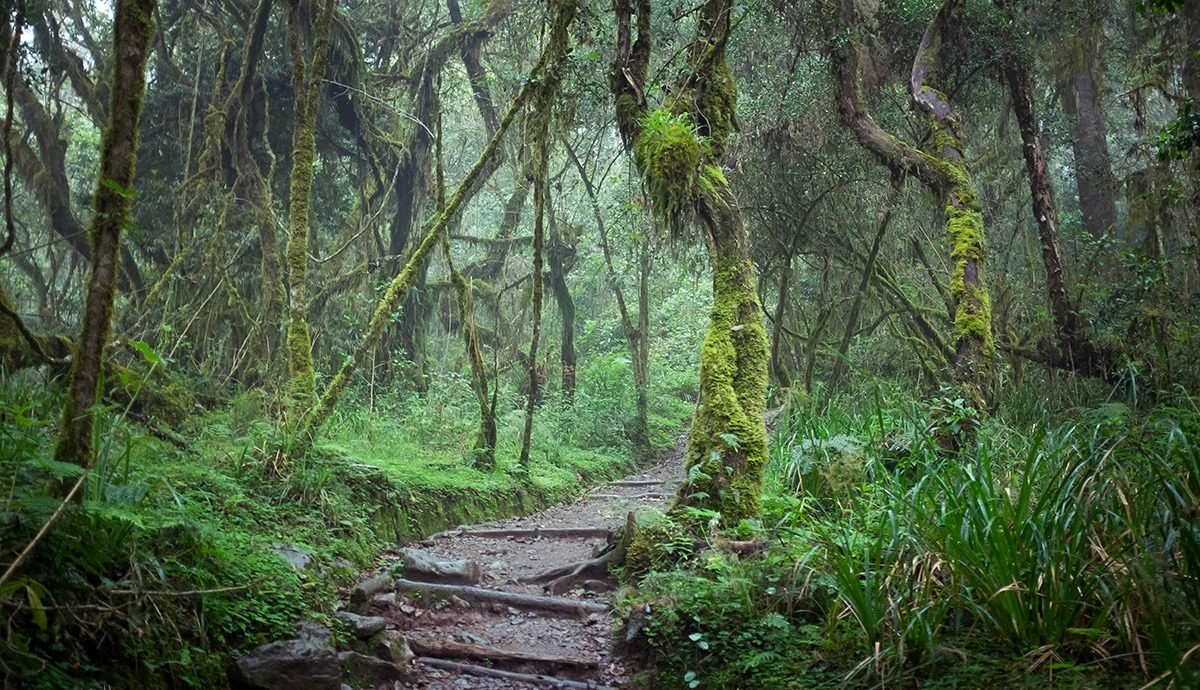
The area of heath just beyond the tree line also enjoys a relatively misty and damp environment as cloud clings around the density of trees. This is covered with heather and shrubs such as Erica Arborea and Stoebe Kilimandsharica, and a number of dramatic looking Proteas.
Open Moorland
From around 3,200m a wide expanse of moorland extends beyond the heath and the cloud line, so that here the skies are generally clear, making the sunshine intense during the days and the nights cool and clear.
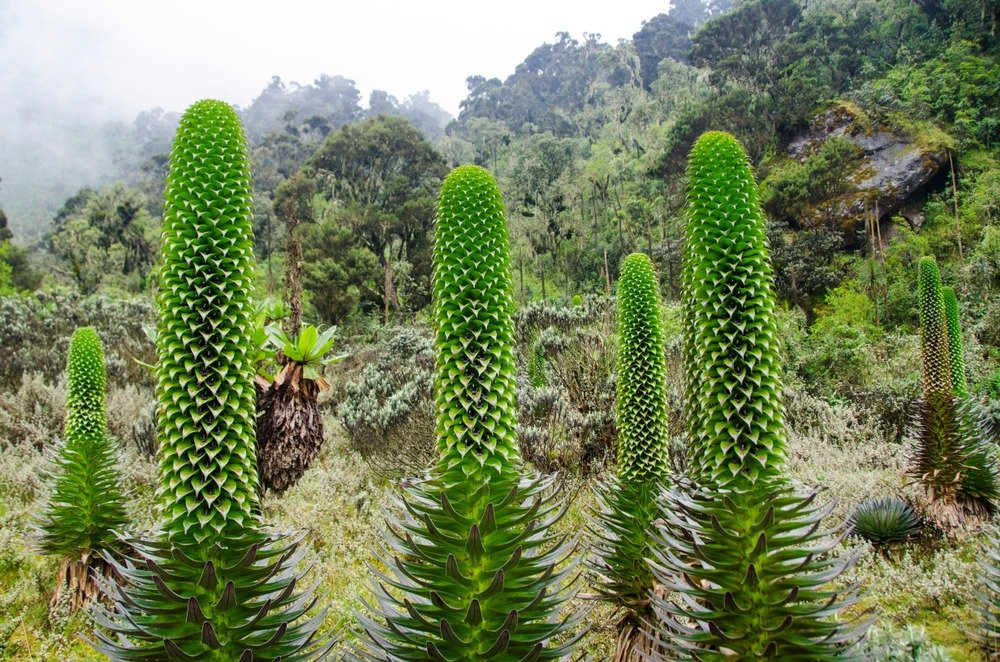

The climbing incline remains gentle, but thinning oxygen provides less fuel to energise the muscles and can dramatically slow the pace of walking. Hardy endemic species of Giant Groundsels (Senecio) and Lobelia (Deckenii) towering up to 4m high thrive in this moorland zone and give the landscape a strangely primeval atmosphere.
Alpine Desert, Sparse Vegetation
Even higher, beyond 4,000m, oxygen levels are depleted further as the landscape develops into a more bizarre alpine desert, with sandy loose earth. Weather conditions are so intense and temperature fluctuations so dramatic that barely any plant species survive other than everlasting flowers, mosses and lichens. Only the odd lichen survives beyond 5000m, after Kibo Huts and beyond the Saddle, where the landscape is predominantly rock and ice fields. Here, climbers experience the final steep push to the summit.
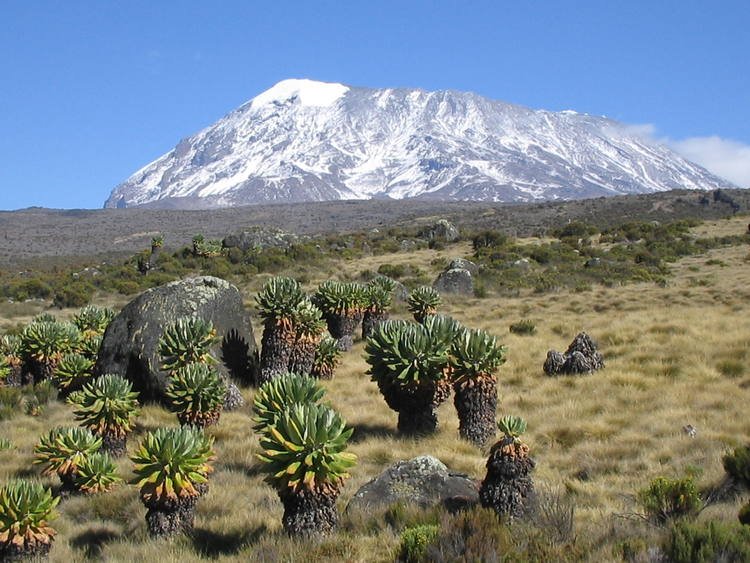
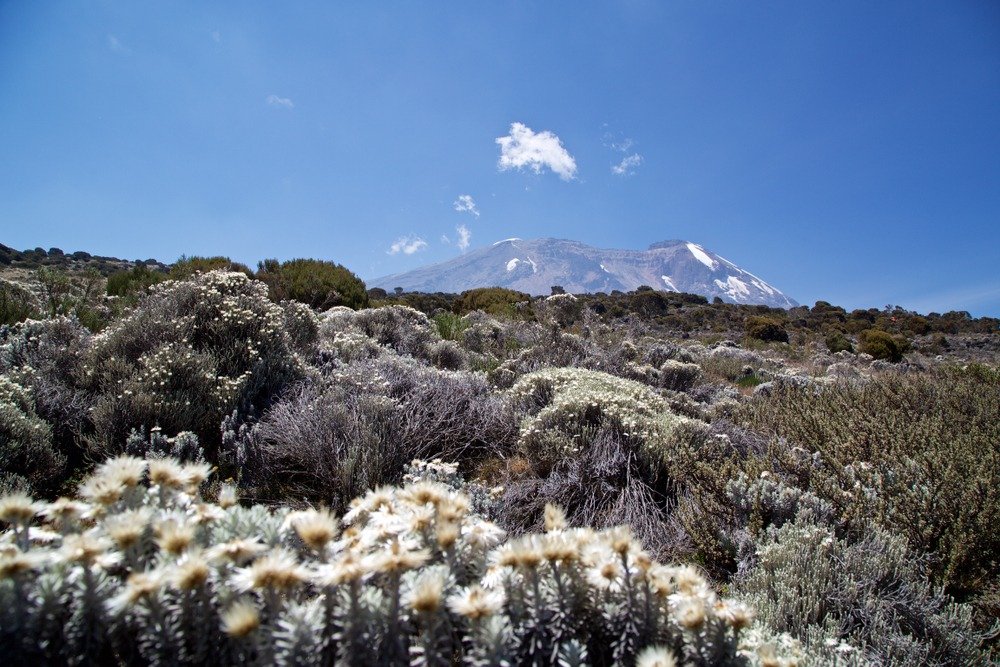
Saddle to Summit
The easterly routes, Marangu, Mweka, Loitokitok and Rongai all converge west of the saddle near Gillmans Point, between the peaks of Mawenzi and Kibo. Kibos crater is roughly circular with an inner cone extending to 5,800m, (100m lower than the summit at Uhuru Peak).
At the centre an inner crater with walls between 12 and 20 m high contains another concentric minor cone, the centre of which falls away into the 360m span of the ash pit. This is the 120 metre deep central core of the volcano, and casts sulphurous boiling smoke from its depths despite the frozen, snowy outskirts.
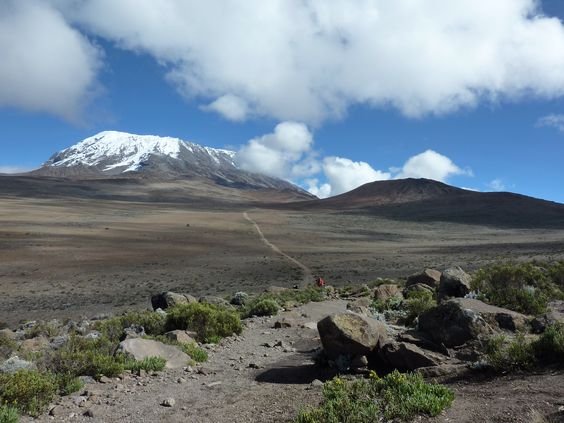
MOUNT KILIMANJARO TREK ROUTES
Marangu (Coca Cola) Route
Distance covered: 69km
Days to complete: minimum of five days.
Marangu Route is often called the Tourist Route or the Coca Cola Route, and is both the least difficult and the shortest way to reach Uhuru Peak. It is also the oldest of the routes. 70% of all climbers choose to take this route, as it mostly consists of easy hiking.
While this is the ‘easiest’ route, it also has a high failure rate due to poor preparation. If you take the route seriously and prepare adequately, you’ll be fine.
It is nicknamed the “Coca Cola”route, as it is popular and attracts a larger number of climbers than other routes. It approaches Kili from the southeast and passes through beautiful rainforest and moorlands. The ascent on this route is constant and moderate, and the trekking is relatively relaxed compared to sections of other routes. This is a good bet for those concerned about their fitness. Marangu has good paths and gradual tracks. However, the constant ascension makes for a poorer acclimatization profile.
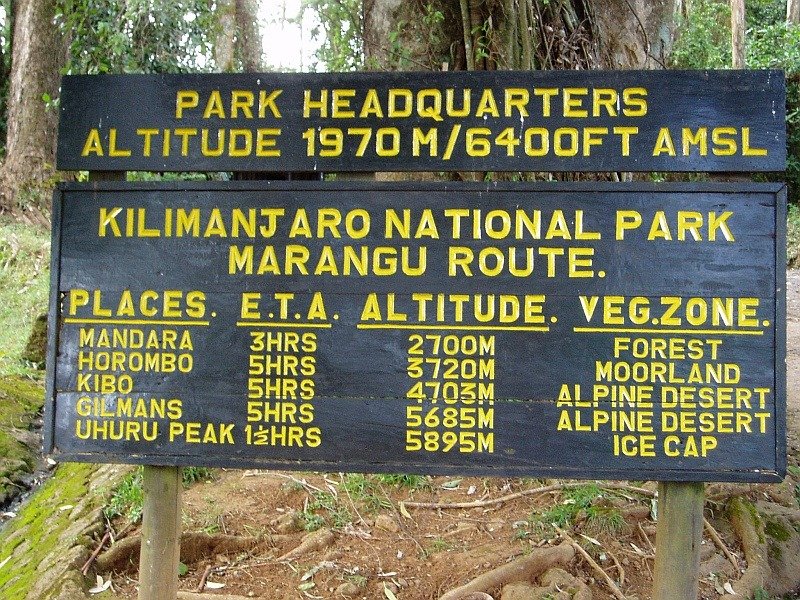
In contrast to the other routes, you overnight in mountain huts protecting you from the elements, as opposed to sleeping in tents. Following the Marangu route, you ascend and descend on the same route and you will meet other groups travelling in the opposite direction.

Marangu is not considered as scenic as other routes, but it has the benefit of boasting hut accommodation along the route – which makes it a good choice in the rainy season.
You can choose to complete this route in either five days or six days.
6 DAYS MOUNT KILIMANJARO TREK VIA MARANGU ROUTE
Rongai Route
Distance covered: 70km
Days to complete: minimum of 6 days
The remote Rongai route begins on the side of the mountain close to the Kenyan border, running on the dry northeast side of Kilimanjaro.
It takes a long drive to get to the starting point. It is the only route that approaches from the north and can be drier than most routes if you hike during the rainy season. The acclimatization profile is fair.

Second to the Marangu Route in terms of difficulty, this path is also gaining popularity due to the stunning and unique wilderness conditions it features. You spend several days hiking through true wilderness before joining up with the Marangu Route at Kibo Camp.
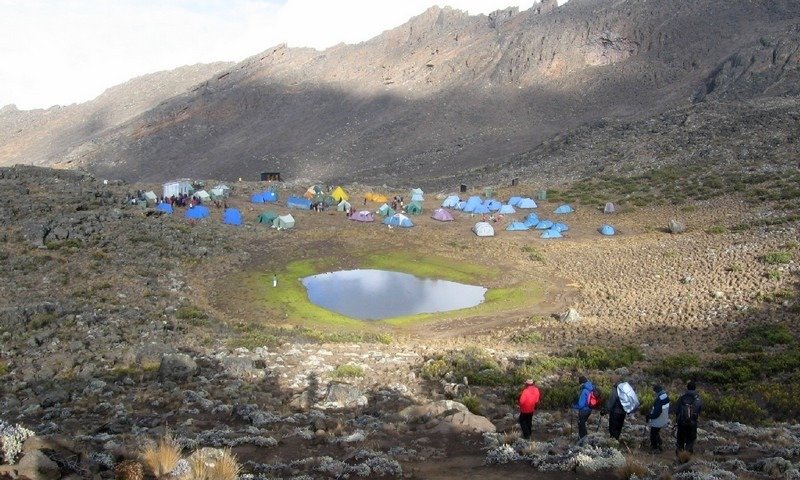
The route is less crowded, moderately steep, crosses a beautiful alpine desert zone and allows for good views towards Kenya and the Kibo summit. On this route, you return via the Marangu route.
Caves along the way offer an opportunity to overnight in a completely unique fashion, and the route is a popular choice for those wanting to avoid the Marangu crowds.
The Rongai Route takes six days.
Machame (Whiskey) Route
Distance covered: 63km
Machame route: minimum of six days
The Machame route is often considered the most striking and has spectacular views of the summit, but it is weather dependent. The route faces the wind and is on the southern side of the mountain where rainfall is heavier and the vegetation more dense.
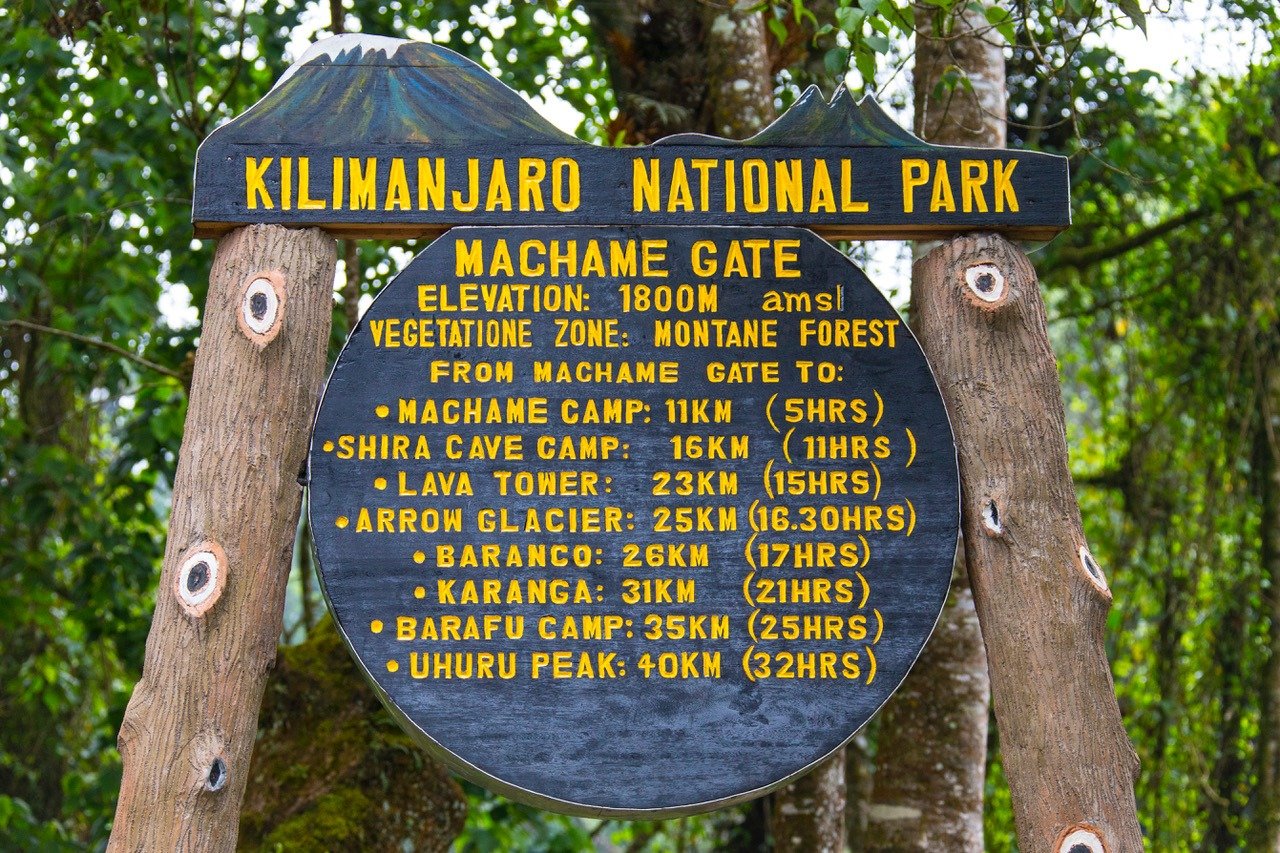
Considered to be the most beautiful and scenic of the various routes up Mount Kilimanjaro, the Machame Route is appropriate for more adventurous hikers who wish for a more physically demanding climb than Marangu or Rongai can offer.
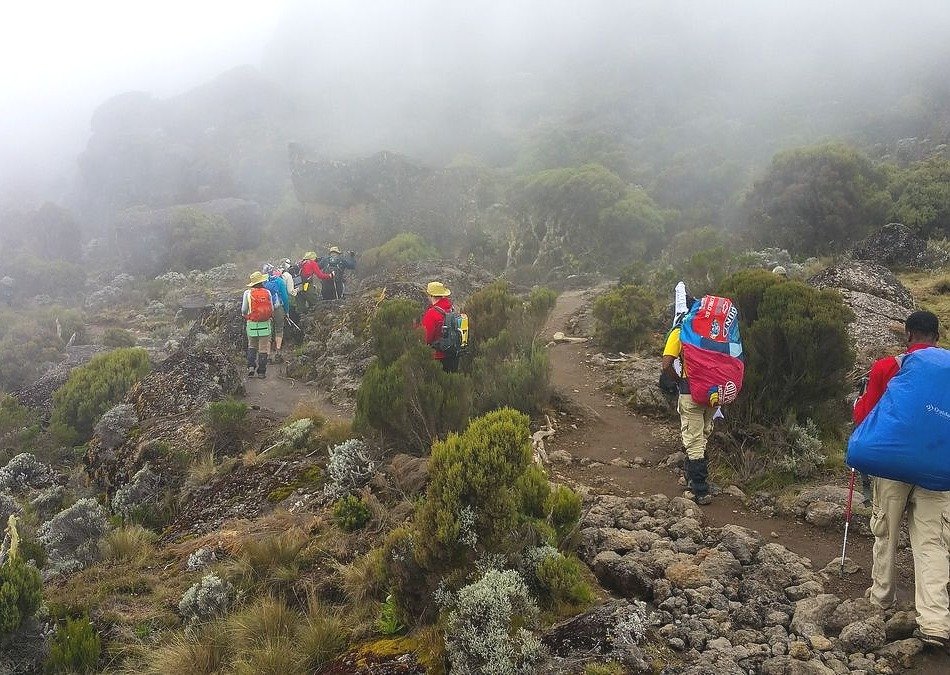
The route is steeper than both the Marangu and the Rongai routes and physically more demanding, but very good for acclimatisation. It joins the Lemosho route from New Shira Camp. Machame route is the most popular route with our guests – about 60% of our guests climb Kilimanjaro via the Machame route. Machame is nicknamed the ‘whiskey route’. You will descend along the Mweka route. This option is generally for slightly fitter hikers.

Machame is presently the most popular route despite its higher degree of difficulty, so you can expect to not be the only one climbing.
You can choose to complete this route in either six days or seven days.
6/7 DAYS MACHAME ROUTE – KILIMANJARO MOUNTAIN TREK
Lemosho Route
Distance covered: 70km
Days to complete: between 7 and 8 days
Shira was the ‘original’ Lemosho route while Lemosho is now the ‘improved’ variation. The Lemosho route begins at Londorossi gate on the quieter western side of the Kilimanjaro.
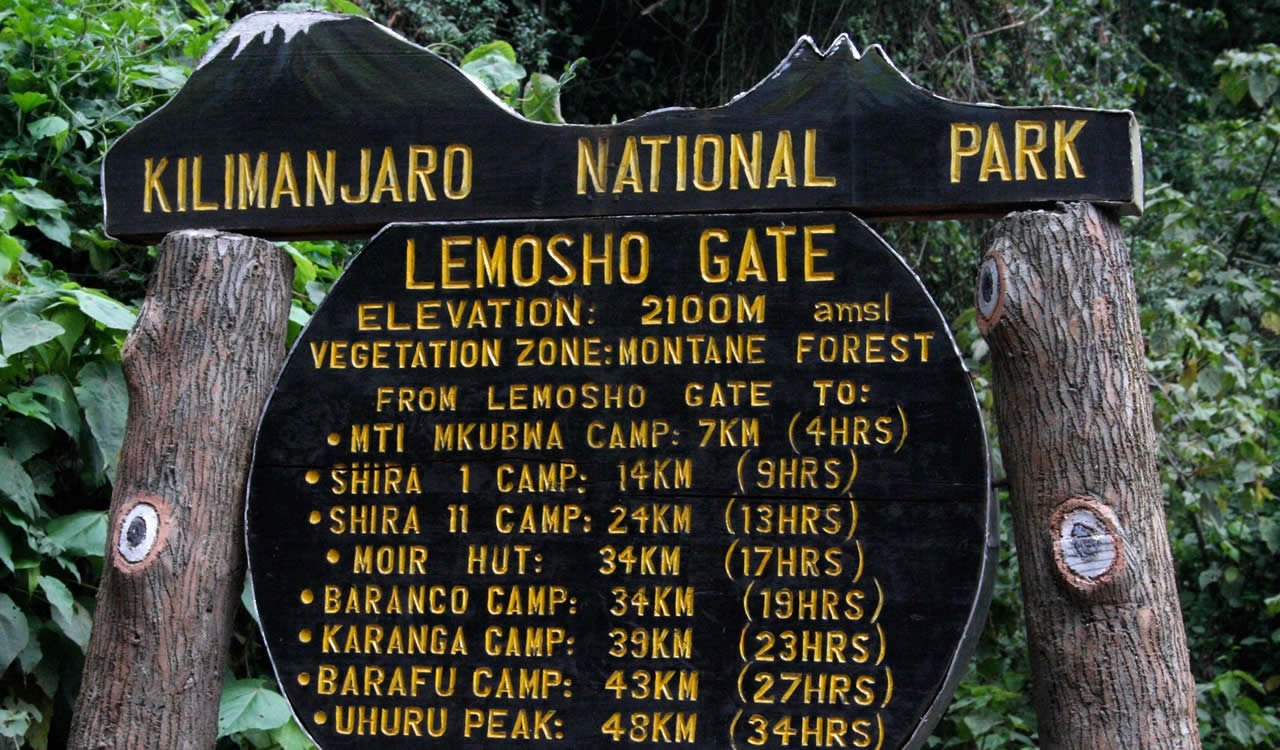
With two options when it comes to reaching Uhuru Peak, the longer Lemosho Glades Route is an alternative way to ascend up to the Shira Plateau. The Lemosho route offers climbers an opportunity to see some of Africa’s most iconic animals up close, and the first day’s climbing even requires the presence of an armed ranger.
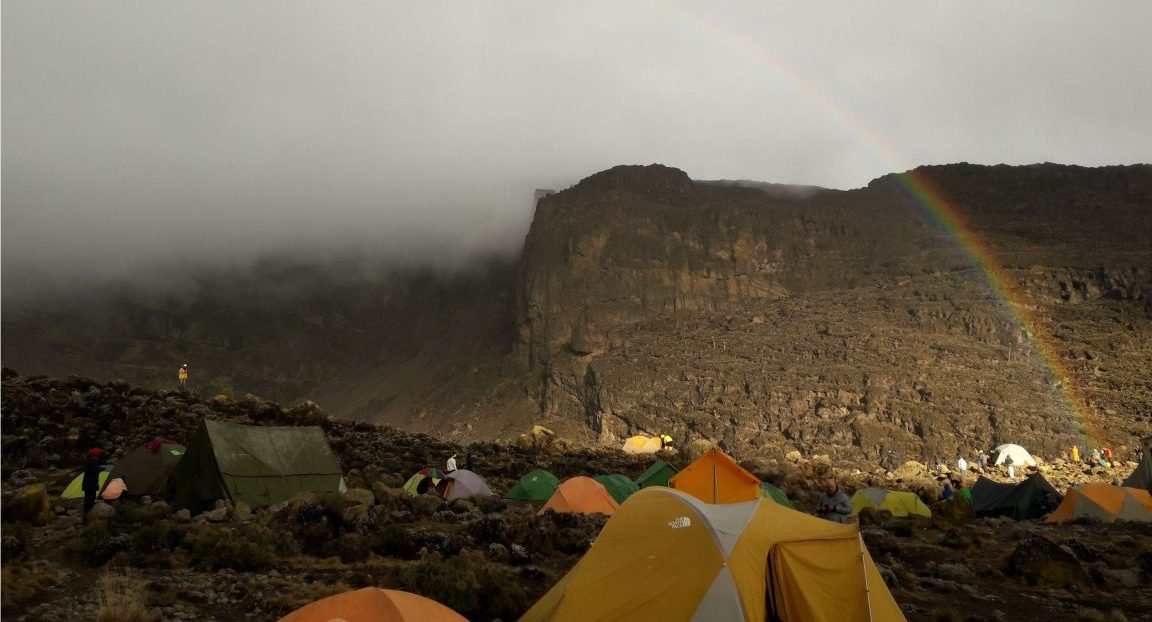
It advances through rain forest on the first two days and later passes through a scenic heath zone with an abundance of Ericas. With eight days, this is the longest route up Kilimanjaro; from the third day it runs parallel to the Machame route. It is a difficult route, but excellent for acclimatization. It is considered to be more difficult than the Marangu and Rongai routes.

You can choose to take the easier Machame route to the summit or brave the Western Breach/Arrow Glacier route.
Lemosho offers a great combination of scenic views, low climber density, and a high success rate.
It is recommended to allow six to eight days for completion of Lemosho Route.
Shira Route
Distance covered: 56km
Days to complete: seven days
The Shira Route is very similar to Lemosho Route, but starts at a higher altitude. In fact, Lemosho was a route designed to improve upon Shira Route, and is considered a vastly superior climbing experience.
Those hiking the Shira (Londorossi) route will drive to the Londorossi Gate together with their transfer driver and then to the Moram Barrier at an altitude of about 3800m. It is important that you have allowed for sufficient days to acclimatize to master this increase in altitude..
The route is very similar to the Lemosho route, accessing Kili from the west. Shira (Londorossi) crosses the spectacular Shira plateau and later joins the Machame route. This difficult route allows for good acclimatization, provided you are fine starting at a high altitude.

Climbers will need to be very confident in their ability to acclimatize should they take this route. Given Lemosho is an improved version of this route, we discourage people using the Shira Route.
Umbwe route
Distance covered: 51km
Days to complete: minimum of five days
The Umbwe route is a relatively short and very steep but scenic route approaching from the south. It is the least used and most demanding of all routes. As its challenging ascend is not popular with most climbers, it is instead often used for emergency descent from the Machame or Shira routes.
This route has great views, but it is the most difficult way to reach the summit. Altitude acclimatization is difficult due to the fast ascent and the success rate is very low.
The hardest and steepest route to reach Kilimanjaro’s summit, Umbwe is recommended only for truly experienced climbers.
The direct route means that very little time is allowed for acclimatizing, and the trying climbing conditions combine with this to make it the route with the lowest success rate.
Northern Circuit Route.
The Northern circuit up Kilimanjaro is the newest and lesser-used route that circles the north side of Kibo peak. It is also regarded as one of the best routes up Kilimanjaro. Climbers using this route must use another one to reach the summit. The trail follows the alpine desert band around the peak and offers amazing views over the lowlands below.
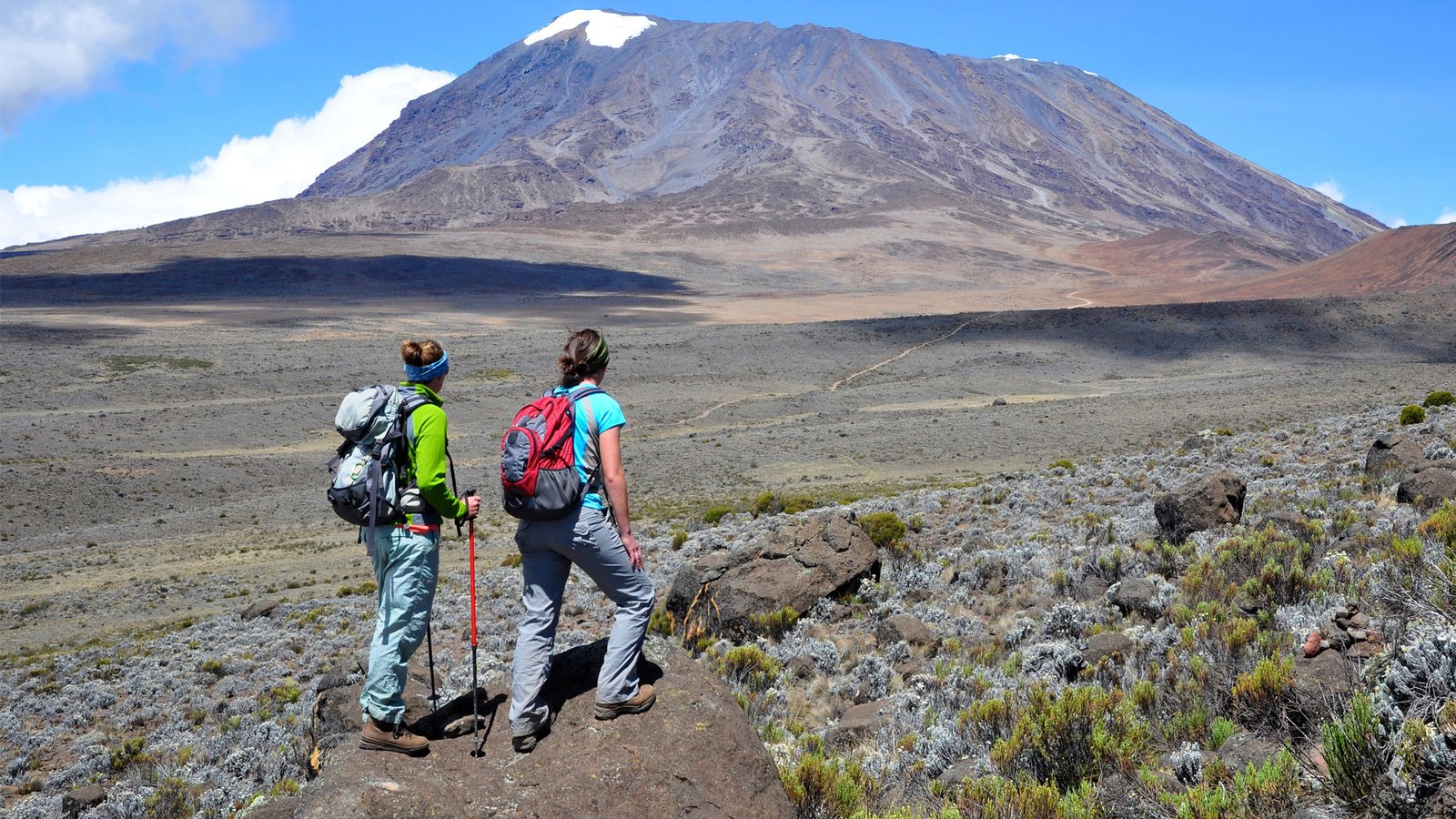
It is good for acclimatization and is incorporated into custom-made trips. This is a very long route, its total length depending on the access route. The Northern circuit Kilimanjaro is a rewarding and challenging climb for those who choose this option.
The newest route to the summit of Mount Kilimanjaro, the Northern Circuit is the longest of the routes but promises a quieter, more personal climb.
Beginning on the Lemosho Route, climbers will eventually split away and traverse the mountain’s northern slopes far away from the crowds. The extra time taken to adjust to high altitude on this climb mean it boasts the highest success rate of all routes.
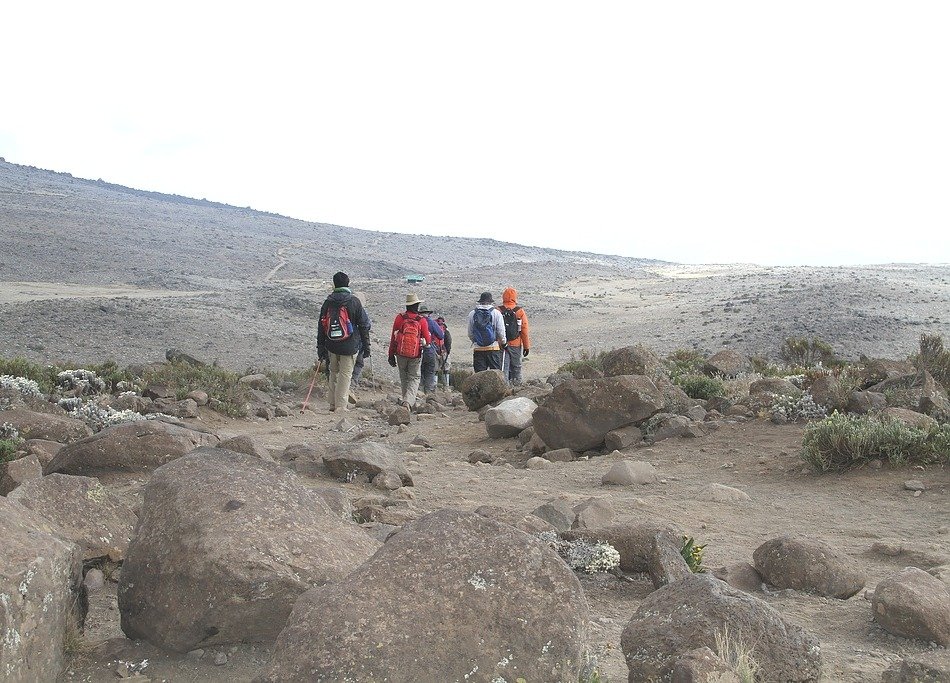
How do I prepare for Mount Kilimanjaro Trek
Mt Kilimanjaro is the highest mountain in Africa and does not require any technical climbing! All you need is walk slow but steady. For the summit to be reached, your body must sufficiently acclimatize itself. It is important to be physically, emotional and spiritual prepared for the Kilimanjaro Expedition. Another important part of the preparation is having the proper equipment before you depart to Tanzania. See the Mount Kilimanjaro packing list for details.
Physical preparation
It is very important that your body is properly prepared for the physical challenge of the Kilimanjaro. The better prepared you are, the better you plan to conquer the highest point of Africa. Good preparation will make a significant contribution to your own confidence and your mental strength.
Mental preparation
Mt Kilimanjaro is an amazing experience and anyone is able to reach its summit(Uhuru peak). Think about this when you prepare yourself for the expedition. You will not be alone as our team will make you feel welcome and will be there with you all the way. Always think positively and you will enjoy the climb! Remember to make it a journey and not a destination.
How will i get fit?
The type of condition is more important than the degree of fitness.Kilimanjaro is a walk and the interesting part of it is you take your time, no rush , so the best preparation you can have is to walk, preferably under simulated conditions. Although to some extent it helps to go running/jogging, your muscles are still not preparing for seven days of quiet but heavy walking. I suggest that you will regularly walk long distances. Ignore the elevator and take the stairs or even take your dog for a walk,
Medical check-up
Before starting a physical training program, it’s always wise to get the approval of a doctor. Also knowing your health conditions from the doctor is avery essential key as you will be hiking at a high altitude and its very risky if by a mistake you didn’t consult a doctor and found out you have heart or lung problems and you need evacuation from Kilimanjaro.
What to know about Altitude Sickness
If you are planning for Mount Kilimanjaro Trek we highly recommend reading our altitude sickness (Acute mountain sickness) guide to be familiar what it is, its cause and prevention.
The altitude Sickness (Acute mountain sickness)
Is an illness that ranges from a mild headache and weariness to a life-threatening build-up of fluid in the lungs or brain at high altitudes. Acute altitude sickness is the mildest and most common form. Because more people are traveling to areas of high elevation like climbing kilimanjaro.
High Altitude: 1500 – 3500 m (5000 – 11500 ft)
Very High Altitude: 3500 – 5500 m (11500 – 18000 ft)
Extreme Altitude: above 5500 m (18000 ft)
What to do to Acclimatize and prevent altitude sickness
Acclimatization is the process in which an individual organism adjusts to a gradual change in its environment . So while your climbing Kilimanjaro your body undergoes a process of trying to adapt the altitude transformation.
So, physiologically, what happens during acclimatization is, As you ascend higher into the atmosphere, there is less atmospheric pressure pushing all the air molecules together, so oxygen molecules become few and far between. Read more about acclimatization and how prevent altitude sickness while climbing Kilimanjaro to get your self informed and prepared you for your trek.
When should I go for Mount Kilimanjaro Trek?
Kilimanjaro is climbable all year round. The best months to climb are December-March, and September-October, which are the warmest and driest months. The next best are June to August, but they are colder. July, August, and September are the busiest months. Summiting on or soon after a full moon is very beautiful and helps illuminate the landscape without using headlamps. However, it is also very bright for sleeping and stars are not as visible.
Do I need to take malaria medicine?
Malaria is a serious problem in East Africa so you must consult your doctor about getting effective malaria prophylaxis for your visit. Many people are avoiding Lariam nowadays and using Malarone. You cannot catch malaria above 3000 metres on Kilimanjaro, but you must be careful below that altitude, particularly if you visit the coast where the strains of malaria tend to be especially virulent.
What is the weather like on Mt. Kilimanjaro?
Temperatures range from 25 to 30 degrees Celsius at the foot of the mountain and -15 to -20 degrees Celsius on top plus wind chill. Lower down, it can be wet and humid, but higher up, there can be snow. Rain and snow may be encountered any time of the year!
How difficult is it to climb Kilimanjaro?
It requires no technical climbing experience, and any moderately fit person can summit the mountain.
Which route should I take?
Your decision will depend on where you want to sleep and the hiking distance each day and number of days of each route. On the Marangu Route, you sleep in huts with simple beds, while on all the other routes, you sleep in tents. There are two main routes on the mountain: the Marangu and Machame. You may also want to consider the Rongai Route as it is far less traveled. The Lemosho Route is a good choice if you want a longer route (8+ days).
How do I cope with change of altitude?
Always remember to maintain a slow, steady pace from beginning to end. Going slowly allows the body to acclimatize while hiking. Those who start out too quickly will have troubles higher up the mountain as the body will be overexerted. This still holds true if you are spending an extra day on the mountain.
How long does it take to reach the summit?
It will depend on the route you pick and your pace. It can take from 4-8 hours to reach the summit from the high camp.
Why do we make the final ascent in the pre-dawn darkness?
Most groups will start for the summit on ascent day at 11 PM to 12:30AM, depending on the perceived fitness of the group, the weather and the route. The pre-dawn hours, while cold, are also the calmest and clearest. The best views from the summit are at dawn. Often clouds and high winds develop not long after sunrise making the summit much less attractive and the descent more difficult. Guides who have been to the summit scores of times report that it is very rare to find it cloudy at the summit at dawn in any season. The ascent day is a very long day of hiking. Some people may require 15 hours to reach the summit and descend to the campsite for that day.
Can children climb Kilimanjaro?
The minimum age set by the National park Authorities for summiting Mt. Kilimanjaro is 12 years old. However, younger children can attempt the summit with special permission. Younger children can also trek on the mountain without reaching the summit.
How many guides, and porters and cooks do we get?
The number of staff that you will have depends on how much gear and weight is brought up the mountain, the route chosen and number of days on the mountain; however a typical trek will have (per 4 persons); 1 guide, 1 assistant guide, 1 cook, 1 waiter and 9 porters.
Are the guides trained in first aid and altitude sickness?
Kilimanjaro guides are trained in acute mountain sickness (AMS) and basic mountain first aid. However, they are not doctors or paramedics. Climbers are responsible for bringing their own first aid kit and medical supplies.
What happens if we one of us gets ill and has to return earlier?
If a client cannot walk because they are injured or sick, at least two support staff will assist this climber down. There is no extra charge for coming down and taken back to the hotel, but you will get no money back for that mountain days you missed, and you will be responsible for medical assistance and extra hotel nights. We highly recommend travel insurance to cover any medical expenses and further evacuation
What additional costs can I expect when I travel with you?
Extra expenses include:
Tips for guides, cook and porters
Rental equipment (sleeping bags, hiking poles, etc.)
Lunches, dinners and drinks at your hotel in Moshi.
Any personal expenses (visas, airport taxes, etc.).
How much is a good tip?
The typical tip is:
Porters $5 per day per porter
Cooks $8 to $10 per cook
Assistant Guides $8 to $10 per guide
Kilimanjaro Guides $20 per day and up per guide
What kind of accommodation is available during Mount Kilimanjaro Trek?
On the Marangu Route, the first two huts sleep four people each, and the last hut is dorm-style with bunk beds. While on the other routes, you sleep in 3-person 4-season dome-style mountain tents, two people each.
